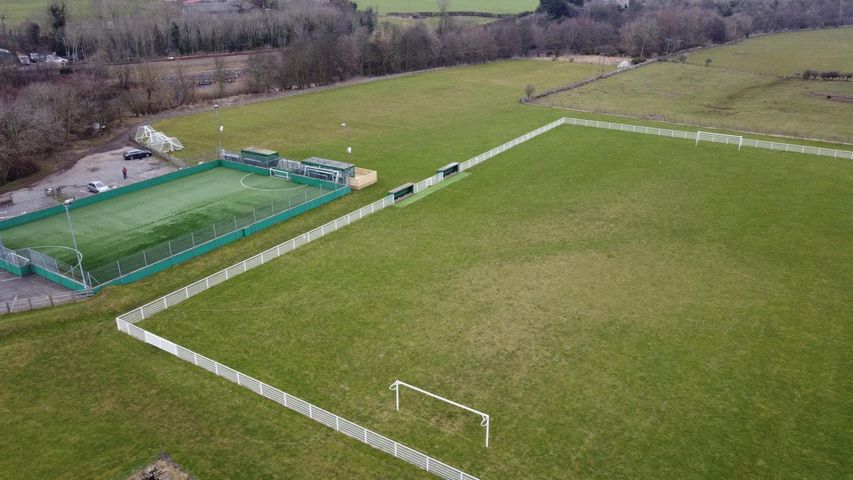Football – the nation’s favourite sport – is booming in Haydon Bridge as the village’s junior and senior players make the most of first class facilities at Low Hall Park. But as Haydon Bridge United FC strives for success both on and off the pitch in the 21st century, this year is a special one for paying homage to our forefathers.
The Club is marking its 140th anniversary in 2021, and such a landmark ensures that the vital contributions of previous generations will never be forgotten.
Much has changed in society, let alone along our stretch of the Tyne Valley, since moustachioed men in cotton, lace-collared shirts, set about kicking a pig’s bladder beside the river. The kits have changed, advances in technology have been plentiful, while fashion trends are barely recognisable aside from the recent revival of facial hair. But the significance of establishing a football club in those Victorian times continues to bear fruit both on and off the pitch.
The passing of the decades has seen homegrown players snapped up by professional clubs, some have earned international honours, while stories of those who “never got away” – the talented players who didn’t quite find a route to a higher level, continue to circulate.
The Club’s life president Dent Oliver remains actively involved – more than 70 years after he made his debut for the first team in the late 1940s, before going on to serve as captain, manager, club secretary and president. Dent was barely out of school when he made his Haydon Bridge debut, in a team which included other local legends of the game, the Gradwell brothers, Eddie Moffatt, Ronnie Marshall, Jackie Harrison, Ralph Curry and Norman Heslop.
There was a first and second team in those days, but the absence of a home ground meant using various fields where farmers would allow a pitch to be marked out – with sawdust being the marking substance of the day.
Throughout the 1950s and 60s, playing venues and changing facilities varied, and even included the old Scotch Arms pub on John Martin Street. But a significant investment in 1971 paved the way for the fantastic facilities enjoyed today.
The Club splashed out around £750 to purchase the existing ground at Low Hall Park – a move instigated by forward thinking village men, including then club president Eddie Waite, Robert Harding, Lance Spooner, and Dent himself.
Two pitches and a pavilion were created, but equally important, the Club finally had a home to call its own, a base for matches and training, to nurture the village’s footballing talent.
Haydon Bridge went on to enjoy a prolific decade. After winning the Hexham and District League in 1969, a team which included Ernie and David Edwards, Davy Alder, Joe ‘Bass’ Worthington, Alan White, Alan Donnelly, Reg Dover, John Dixon, Maurice Frankland, and Alan Borthwick, won five Clayton Cups, the Haltwhistle Cup, and a number of League Cup titles.
That team was managed by Dent, who is adamant that his all-conquering side would have given today’s top sides a good run for their money.
In the 70s and 80s, the club’s commitment to the development of young players led to attention from beyond the Tyne Valley. Shaun Elliott went on to captain Sunderland, making 321 appearances for the Black Cats and also earning three England B caps. George Hope turned out for Newcastle United, scoring a memorable goal against Manchester United, before moving onto Charlton Athletic. More recently, Michael Liddle went on to represent both Sunderland and Carlisle, while Dan Kirkup was at Carlisle, before turning out for Clyde in Scotland’s First Division.
Haydon Bridge continued to evolve throughout the 80s and 90s with further cup honours, but success in the early 2000s led to further growth off the field.
The senior side led by Colin Banks and Tony Jenkins worked its way to the higher reaches of the Northern Alliance League, while the Club extended and refurbished the pavilion, as well as constructing a floodlight five-a-side facility.
There have been setbacks along the way – the Club’s grounds were devastated by flooding in both 2005 and 2015, but the remarkable spirit and determination of dedicated volunteers has always ensured that the Club bounced back and progressed.
Decades of fundraising will always be remembered, from discos and pantomimes to sponsored walks inspired by the late great Alan White.
Such remarkable efforts have enabled the club to grow healthily, well into the new Millennium. Low Hall Park has been extended to the north-east to allow for additional junior pitches, while the Club has evolved its facilities and overall offering for players, parents and coaches.
Today, there are 12 teams ranging from under-7s to senior level, as well as a development squad for children aged 4-6. Now there are opportunities for girls and boys, men and women. The new ladies’ team has shown great courage following a tough start to the season, to defeat Heddon Ladies 5-3.
The men’s Sunday team, re-established in 2010, finished fifth in Division One last season and with much focus on all levels, football is just as important in Haydon Bridge today as it was back in 1881.
Club legends will live long in the memory, including Eddie Brown, the promising England youth international, who was killed while serving in World War II.
Whether you’re a footballer of any age or ability, a parent or carer with a girl or boy interested in playing football, or a would-be coach or volunteer, the club is always keen to hear from you.
